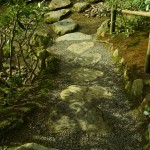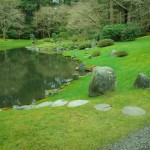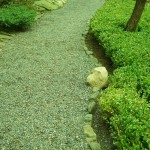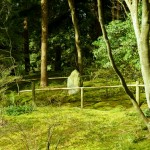The Nitobe garden is a stroll type garden (池泉回遊) that surrounds a large pond. The roads are mostly laid with pebbles and surround the entire garden. However there are also a few exceptions of stepping stone paths that are laid with large rocks. It appears these serve to purposely lead guests in noticing specific scenic viewpoints. The following photos demonstrate some of the examples, including the path that cross the bottom of the waterfall, allowing guests to view the dropping water up close. The second photo is another stepping stone path that oddly ends right before the pond. It looked odd to me at first, but upon stepping onto the last rock, a spectacular view of the pond can be seen, which is likely the original purpose of its design.
The second photo above also seems to serve as an example of 隅掛け sumikake, where some irregularity disrupts an established pattern. The stepping path is an abrupt addition to the pebble road that almost blends into the rock arrangements that draws the guests’ eyes to the water.
The above slideshow entails three other examples of sumikake found in the garden. The first being a larger rock suddenly disrupts the established row of small-rocks framing the pebble road. The photo in its succession is an example that amused me profoundly. These rocks framed a manhole, certainly drawing the eye to it and turning a thing normally regarded as ugly into something unique and pleasant. In my last example, a standing rock protrudes singularly in the middle of some plants. These were very common throughout the garden as one finds many large rocks amidst grass and bushes.
Most of these large standing rocks also portrayed the 七五三shichigosann rule, where things are distributed in a ratio of 7-5-3 in one or more of their size, distance, or height criteria.
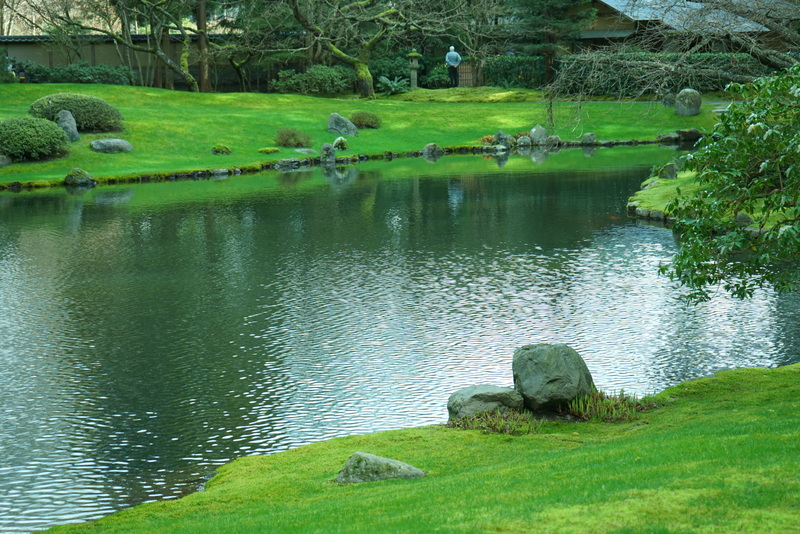

Strolling through the garden, I also made the observation that arrangements in odd numbers may also extend itself to the division of water and marshes in the garden.
After strolling through the garden twice, I came to notice that the pond also seem be divided in three and embody the 7-5-3 rule. Although I doubted this at first as small bridges also cut through two of the three pond sections, after discovering a bird’s eye view sketch of the garden, it verified my observation to a certain extent. From North to South, the three distinct sections of the water-body can be seen to proportionally exemplify the 7-5-3 ratio. The first is the large pond that begins at the water-fall; it is followed by the mid-section then finally a small marsh. Furthermore, the small marsh area is also consisted of three sections that can be seen in the last photo.
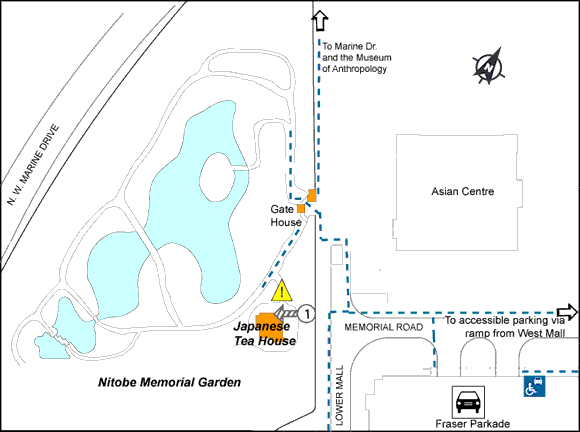
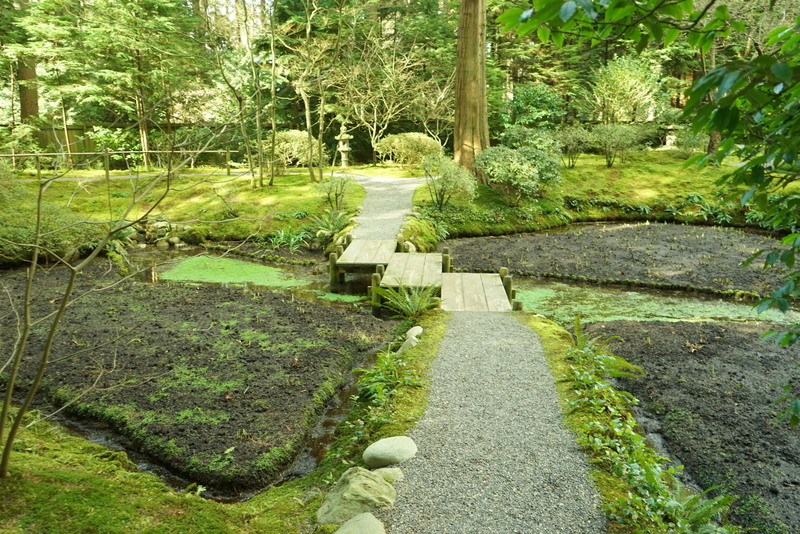
References:
Sugiyama, Ryo. “The Conventions of Japanese Gardens.” Lecture, University of British Columbia, Vancouver, BC, February 24, 2016.
Footprint Map, n.d. map, viewed 1 March 2016, <http://www.maps.ubc.ca/PROD/index_detail.php?show=y,y,y,y,y,y&bldg2Search=n&locat1=N039&locat2=>
